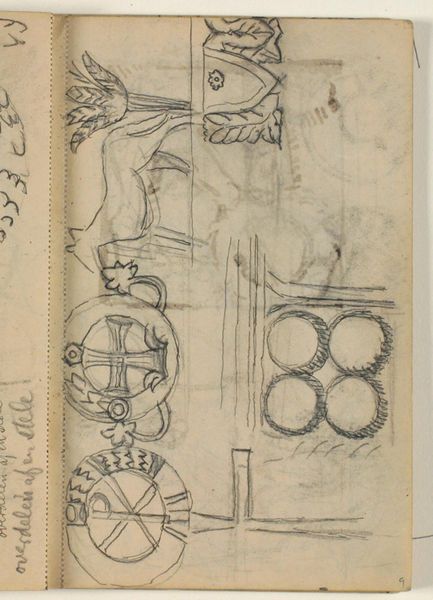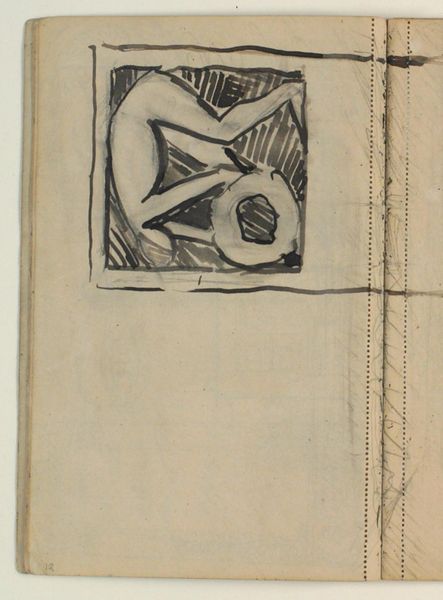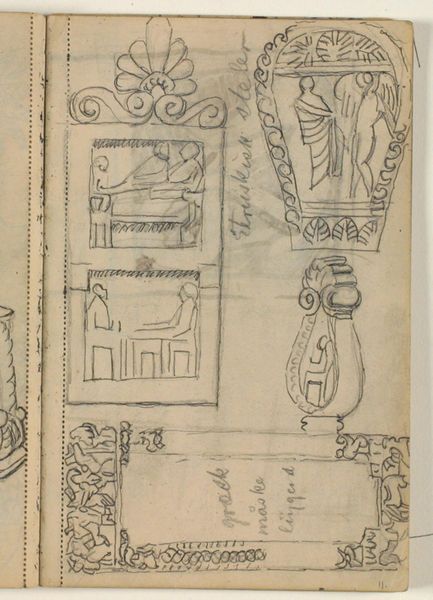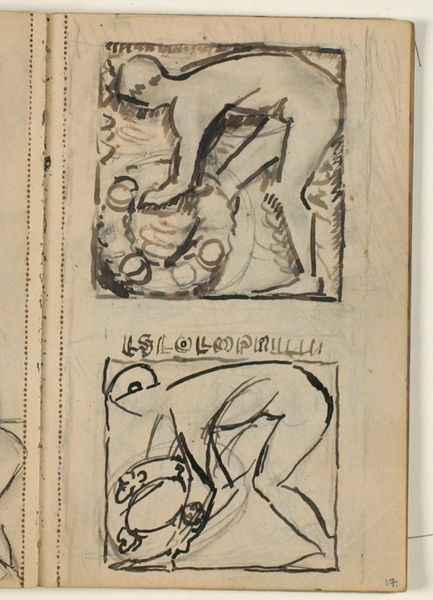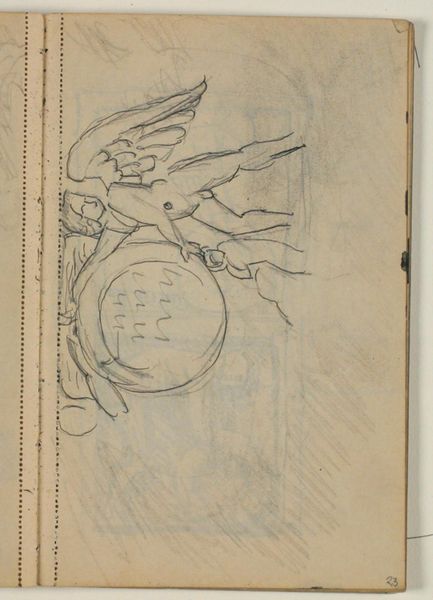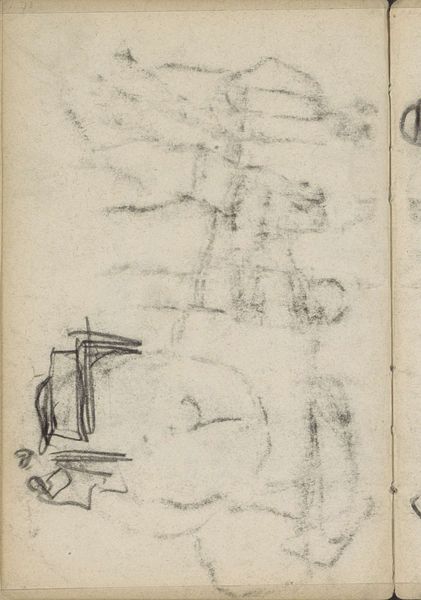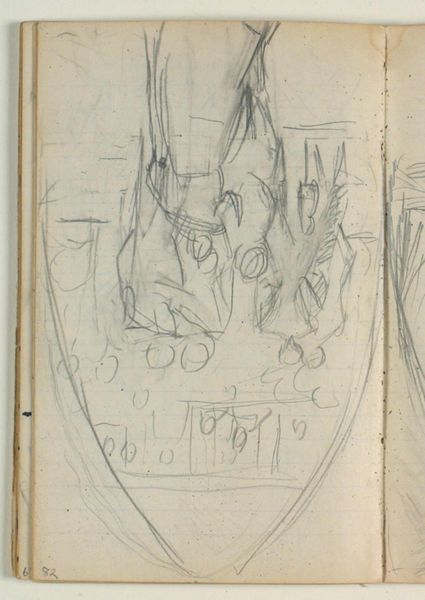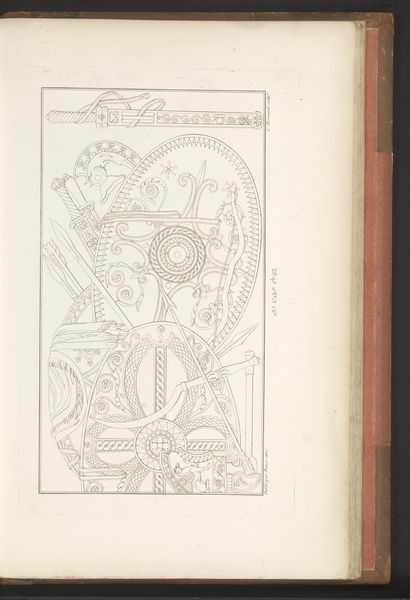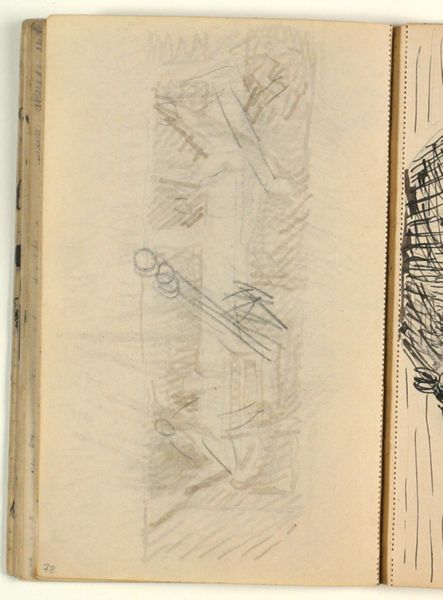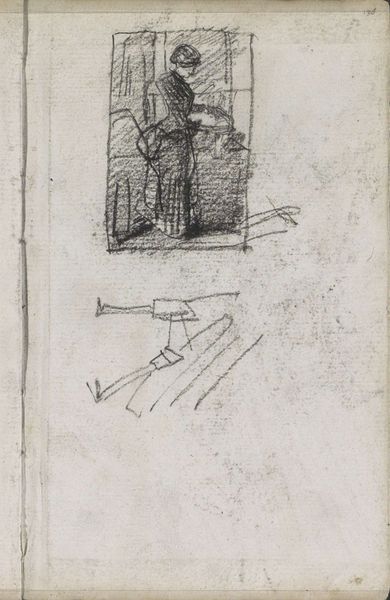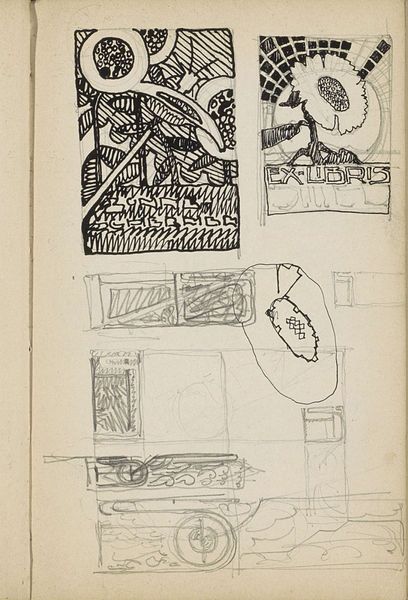
drawing, paper, ink
#
drawing
#
figuration
#
paper
#
ink
#
line
Editor: Here we have Niels Larsen Stevns’s “Udkast til Poul S. Christiansens gravmæle,” a sketch for a gravestone from around 1932 to 1935, created with ink on paper. The stark lines give it a raw, immediate feel, and I’m struck by the figures interacting with the wreaths. What story do you see being told here? Curator: The figures' gestures, their solemnity, remind us that art, even sketches, serves public functions beyond aesthetics. Think of the period - the 1930s, Europe grappling with political instability, rising nationalism. Funerary art often carries the weight of social memory, reflecting dominant ideologies and commemorating not just individuals but also societal values. What impact would these images have had on viewers during this time? Editor: It feels like there's a tension between public grief and individual loss. I mean, what kind of cultural expectations would have influenced how people received this? Curator: Precisely. Niels Larsen Stevns had to navigate expectations about mourning, national identity, and religious beliefs. The placement of these tombstone images matters. The chosen visual language would influence how collective memory remembers this person. Note that, the museum's presentation frames our understanding. Editor: So, it's not just about the figures and wreaths, but also about the context in which this work was created, and how the museum displays it. Curator: Absolutely. We’re looking at a piece of social and institutional history, reflecting not only artistic intention, but also the public role of art. Editor: I never thought about a tombstone sketch having so much to say about politics. Curator: Exactly! And thinking about how art engages with power gives us another dimension. Editor: That has given me a lot to think about. Curator: Me too.
Comments
No comments
Be the first to comment and join the conversation on the ultimate creative platform.

